Wondermondo 🢖 World 🢖 Wonders of Australia and Oceania 🢖 Wonders of Polynesia 🢖 Wonders of Chile 🢖 Wonders of Easter Island (Rapa Nui)
Territory
Wonders of Easter Island (Rapa Nui)
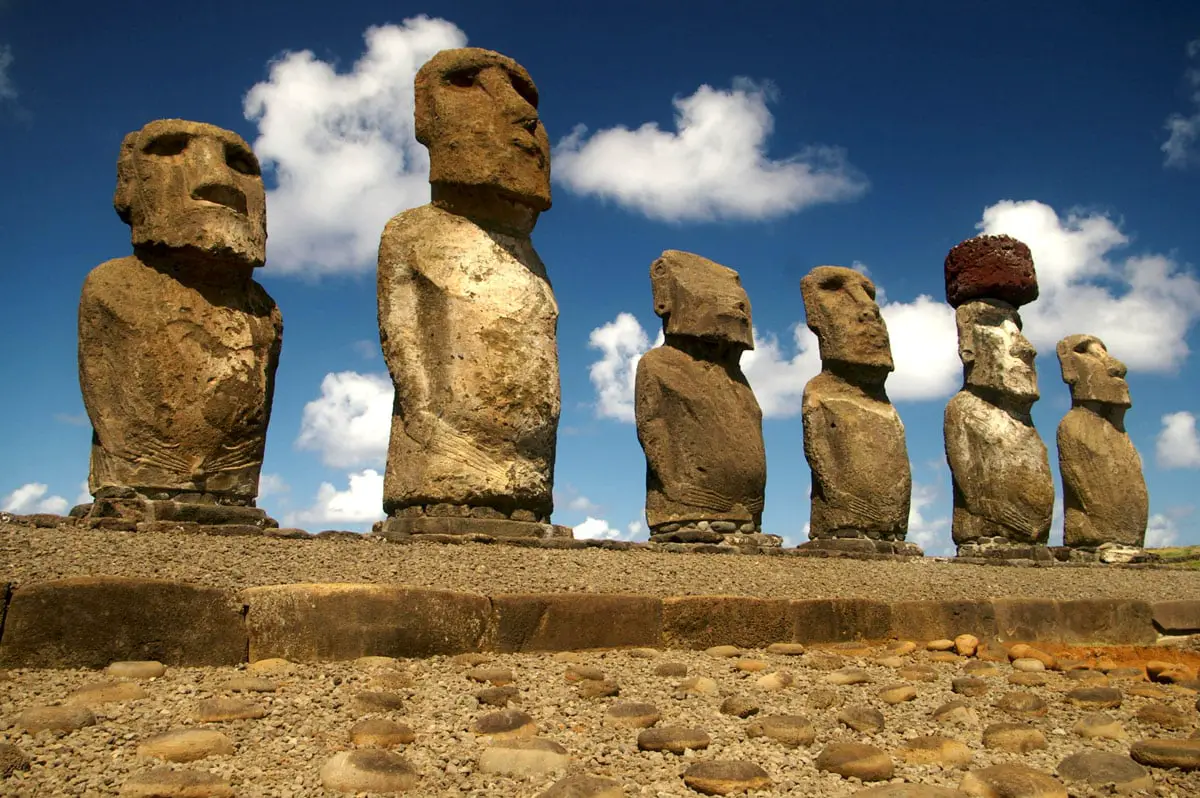
 Highlights
Highlights
The small Eastern Island is small in a geographical sense but it has a unique cultural and archaeological heritage comparable to the heritage of major world civilizations. There are known more than 20,000 archaeological sites on this island which is ten times smaller than London.
The most amazing wonders of Rapa Nui are:
- Moai and ahu. In total there are known 887 monolithic stone statues made in Rapa Nui – moai. There are known 313 ahu on Easter Island, 125 of these had moai statues – for the most part, one of them.
- Petroglyphs. Here are some 1,000 petroglyph sites with approximately 4,000 petroglyphs – nearly any site suitable for stone carvings has been used.
- Caves. There are known more than 800 caves on the island and very often they contain unique, valuable cultural artifacts. In many caves were kept unique, often mysterious artifacts, like thousands of miniature mythical stone sculptures moai maea and also tablets with undeciphered writing – rongo rongo.
Map with the described wonders
If you see this after your page is loaded completely, leafletJS files are missing.
 Top 19 wonders of Easter Island
Top 19 wonders of Easter Island
Geological wonders
Crater of Rano Kau
This is the most impressive volcanic formation on Easter Island, 1.5 km wide at the upper rim and 1.1 km wide – below, surrounded by 150 – 200 m high slopes and cliffs. The bottom is covered with wetlands – numerous small lakes and occasional shrubland, crater is sheltered and suitable for growing wine and fruit trees. The bottom of this crater contains a large boulder with beautiful ancient relief carvings. In the early 20th century there was reported and photographed steam rising from the crater.
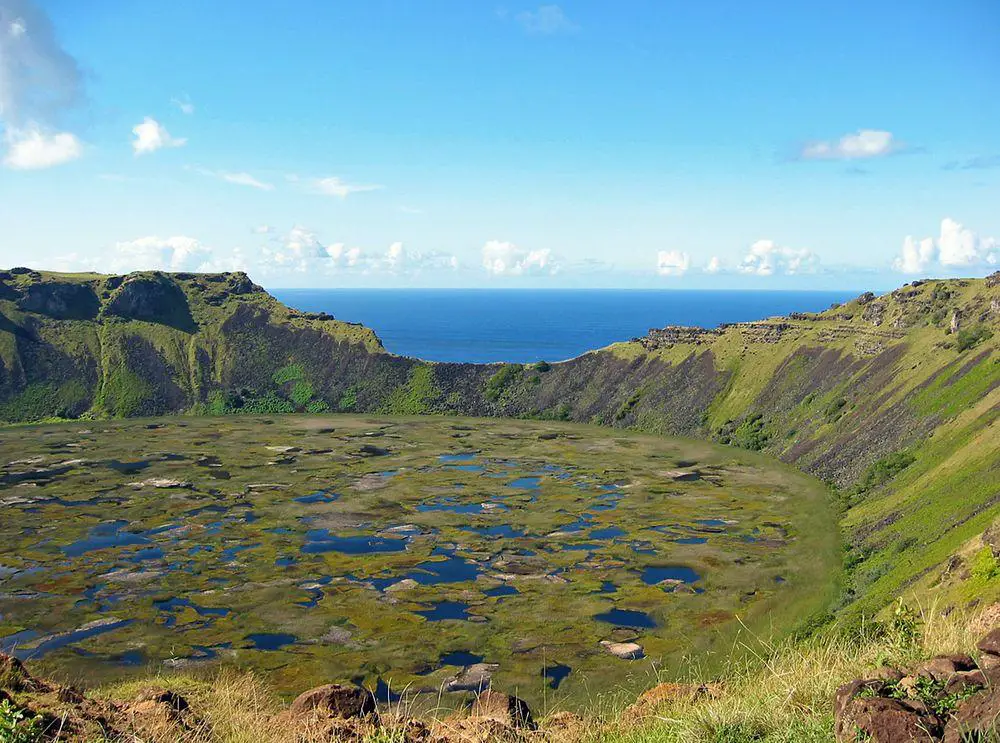
Roiho Cave System
6,500 m long caves, the longest known cave system in Easter Island consisting of numerous smaller caves (f.e. Ana Vaiteka, Ana Te Pahu). These smaller parts of the cave were known earlier, but only in 2006 – 2010 there were discovered very narrow passages connecting them. Here have been found human skulls, arrowheads, petroglyphs, ocher for body paint, and endemic invertebrates. Ana Te Pahu contains a rich Mataveri – cave garden.
Archaeological wonders
Ahu Tongariki
The largest ahu with an unusual history: its moai possibly were toppled during the civil wars and swept inland some 100 meters by a tidal wave in 1960. It is restored and all 15 moai again face the sunset during the summer solstice. Here is the largest standing moai of Rapa Nui – it weighs 86 tons.
Rano Raraku quarry
One of the visually most impressive megalithic monuments in the world. Rano Raraku in 1200 – 1700 AD served as a mine of moai. 397 sculptures are still located in situ, half-made, or left on the way to their destinations. Here is located the largest moai weighing 270 tons and 21.6 m tall, many times larger than any transported moai.
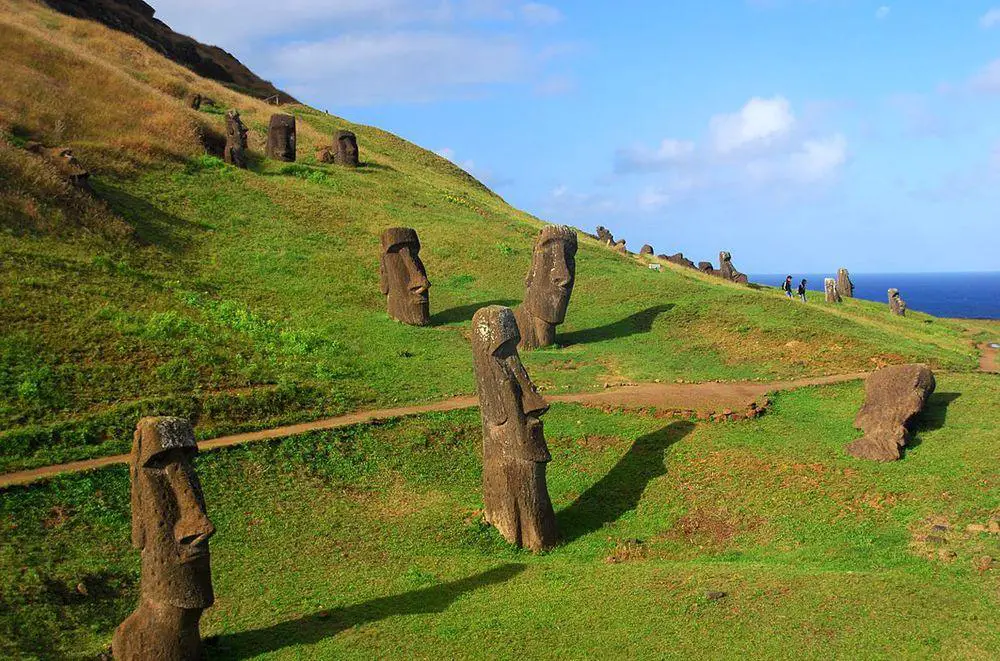
Ahu Akivi
A group of seven moai located inland and erected after 1400 AD and restored in 1960. These moai face a village that has been abandoned long ago. This group of moai faces the sunrise during the spring and autumn equinox.
Ahu Tahai
This ahu consists of five moais and faces an old village site – this village could be inhabited already by the 8th century (the earliest dated settlement on the island). Ahu has been built already in the 8th – 10th centuries, although moais most likely have been built later. There nearby is located a beautiful hare paenga – the foundation of a house of higher status.
Orongo village
A restored village built of stone, consists of 53 structures, mostly of oval form, with grass-covered roofs. It served as a ceremonial center for the birdman (tangata manu) cult of islanders: here took place the annual race for an egg of sooty tern (Onychoprion fuscatus) living on the nearby Motu Nui island. Ancient rituals were discontinued in 1888.
Ahu Vinapu
Group of impressive ahus. The most impressive part of one of the ahus (Ahu Tahiri) is the base of it – it is made of enormous (average weight – 7 tons), perfectly fitted basalt slabs made in a different way than other ahus on the island. This belongs to one of the impressive achievements of megalithic cultures worldwide and poses a puzzle to archaeologists who sometimes (if looking superficially) suppose that this ahu has been influenced by Inca architecture. Tahiri most likely had some 6 moais erected on top of it.
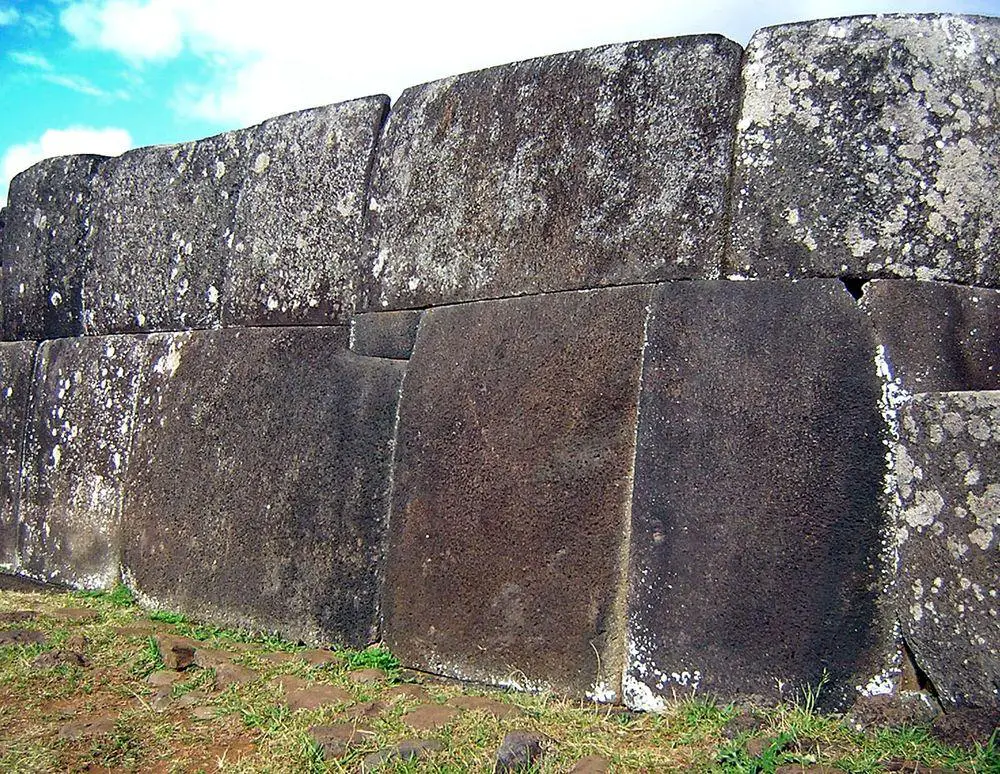
Ana Kai Tangata
The ceiling of this cave is adorned with unique paintings that are related to the birdman cult. Paintings are seen also on a boulder. It is unclear what ceremonies have been performed in this cave but the name of it means "Man Eating Cave".
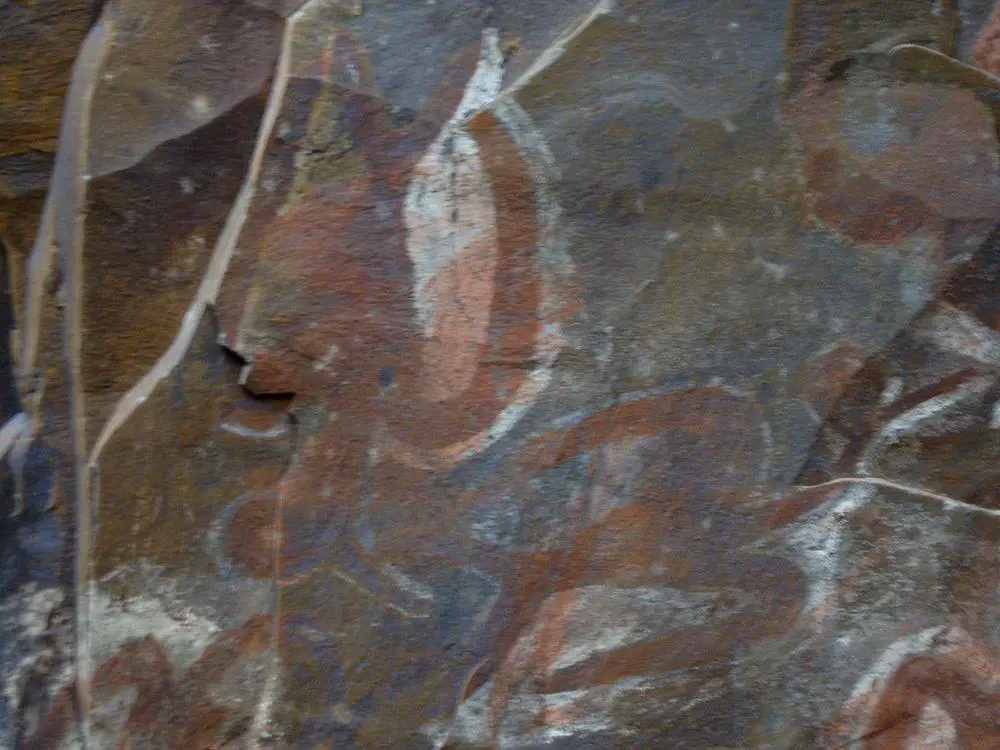
Orongo petroglyphs
One of the most significant petroglyph sites worldwide with 1,274 valuable carvings documented. Large blocks of volcanic tuff around Orongo village are adorned with beautifully carved reliefs that show mainly birdmen.
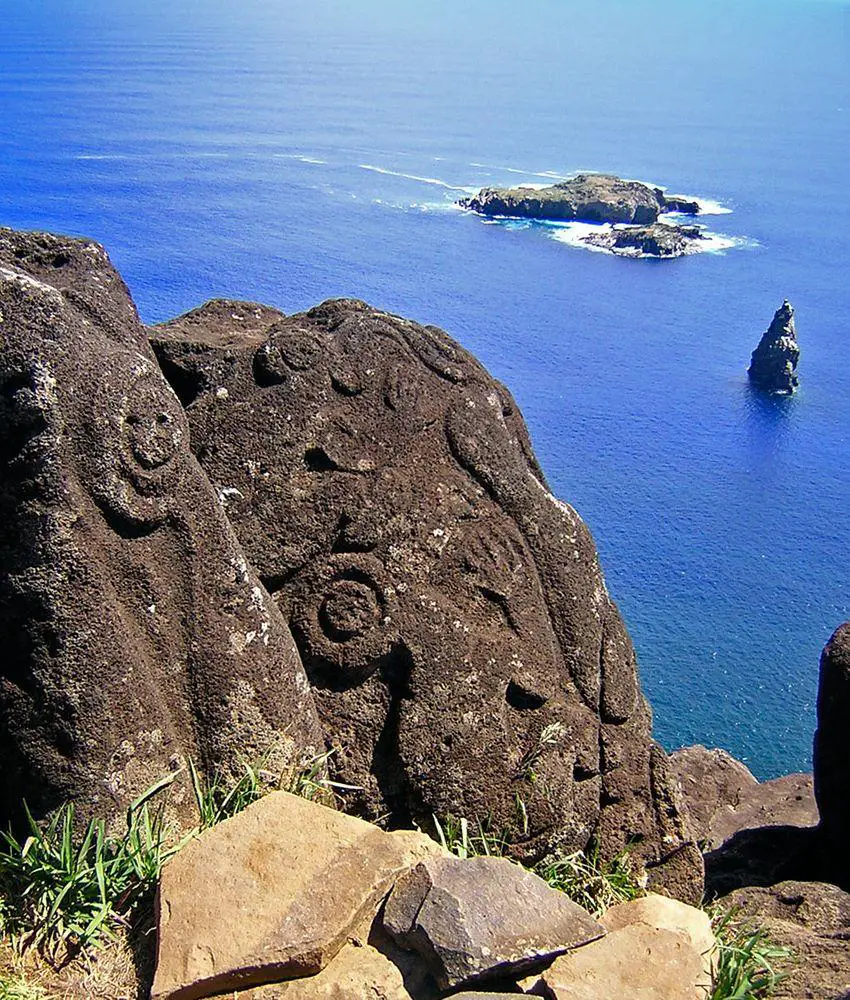
Puna Pau quarry
This small volcanic cone served as a mine of red-colored stone for pukao (topknots) of moai statues. As moai were erected, pukao was lifted on their heads.
Ahu Nau Nau
One of the most impressive and mysterious ahu on the island. Here on one platform are mounted six moai who all have ornate carvings on their backs. The sculptures themselves are more elaborate than most other moais on the island as well. Four moais have their pukaos (head knots). One more moai is standing separately, nearby.
Vai A Heva
This small hill contains tufa outcrops with carved reliefs of Make Make deity – in his large open mouth was gathered rainwater.
Paro
The largest transported moai, moved 6 kilometers far. This giant stone weighs 82 tons, it is 9.89 m long.
Ahu Te Pito Kura
Interesting stone setting with a large sea-wave rounded boulder in the middle. This is revered as the "navel of the world" – Te Pito o The Henua. Most likely this unusually rounded boulder was revered as a talisman of some clans.
Ana Toki Toki
Cave with very impressive drawings of Make Make.
Ana Mahina
Burial cave with bones in it. Adorned with petroglyphs of Make Make deity.
Ana O Keke
Cave with drawings, some of these drawings resemble the mysterious rongo rongo script.
Ava ‘o Kiri
Three cliff panels here are covered with very valuable petroglyphs and marks. Here are found four engravings of skeletal fish, and fishhooks. The site contains also cupules and specific marks. These cliffs have been used by the local people for sharpening their working tools. This possibly was a kind of ceremonial site – tools were sharpened exactly at the location where are fish carvings.
 Recommended books
Recommended books
Rapa Nui, Island of Memory
Georgia Lee is a natural storyteller with an eye for detail and an ear for nuance. Above all, there is her capacity for shared intimacy. Lee began her fieldwork on Easter Island in 1981, entering into close relationships with the islanders, both men, and women. She describes her relationships with the Rapanui people, weaving strands of communal tales together, achieving a tapestry of the island unlike anything else. Rapa Nui, Island of Memory is the truth from a contemporary perspective in all its direct and elusive complexity.
A Companion To Easter Island
The essential guidebook to this mysterious and enigmatic island, and the only book about Easter Island written by someone who lives there. This guidebook includes the island’s history, culture, and all of its significant archaeological sites. It also contains all of the practical information needed for your visit, including island activities and up-to-date restaurant and shopping recommendations.


